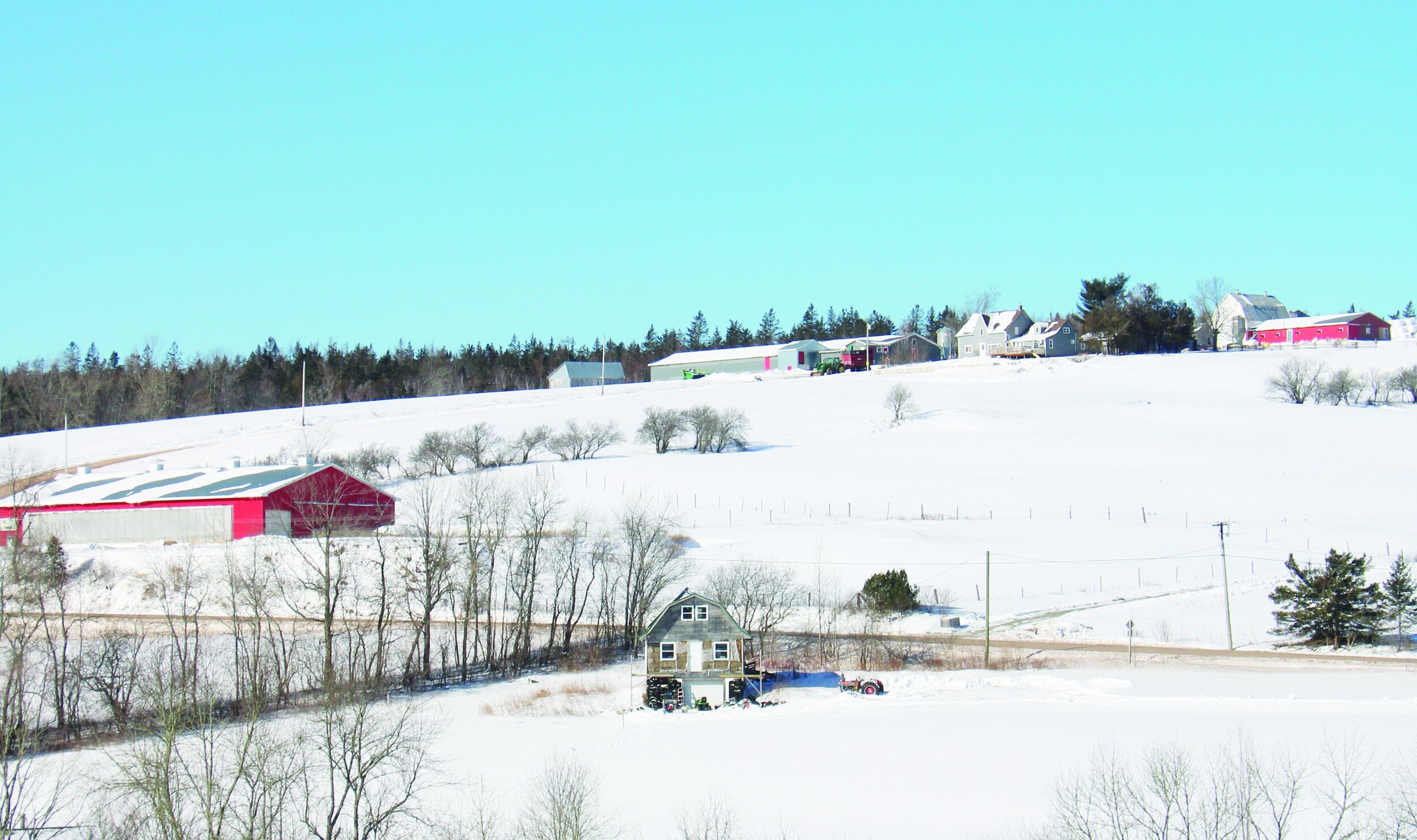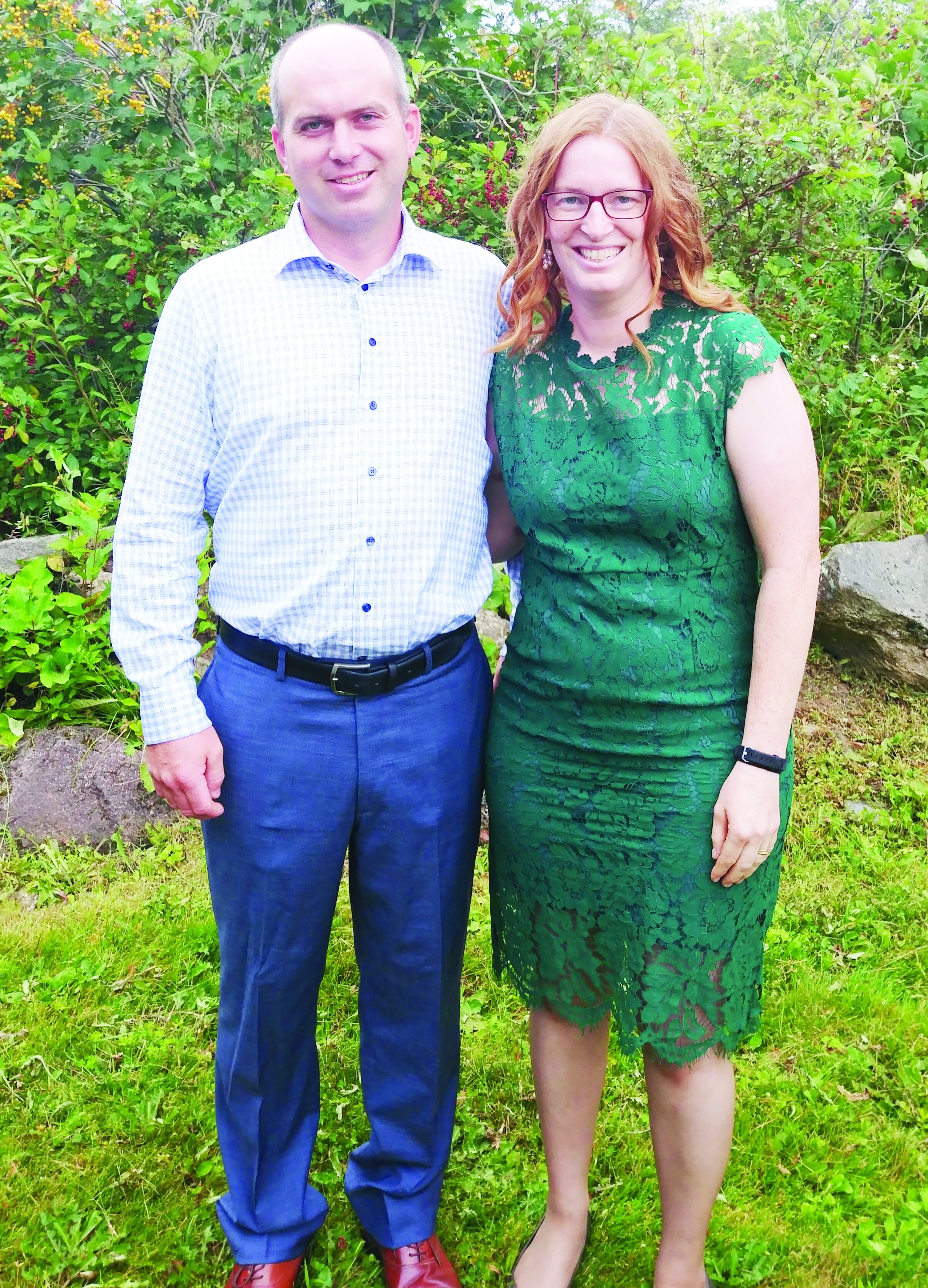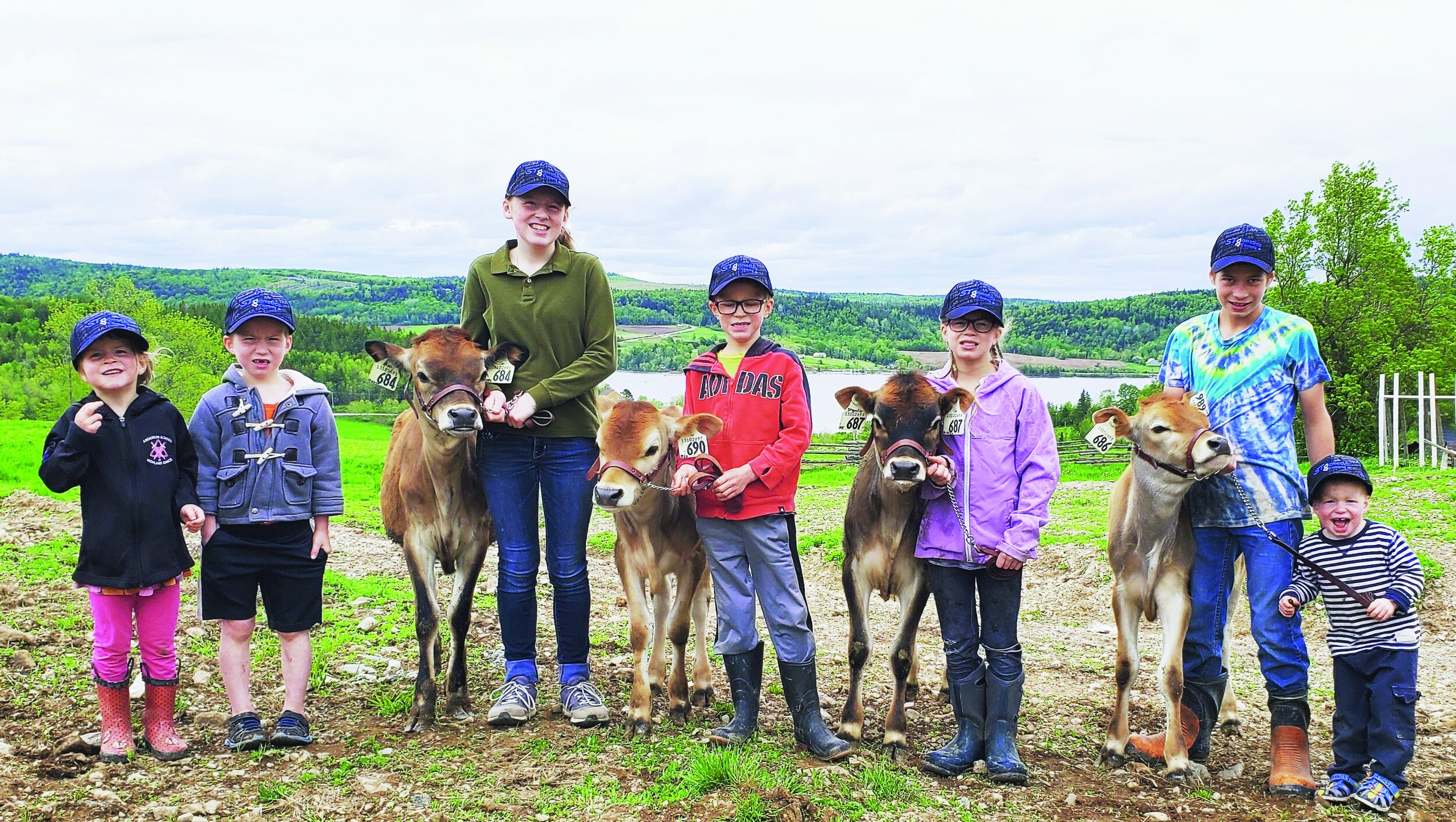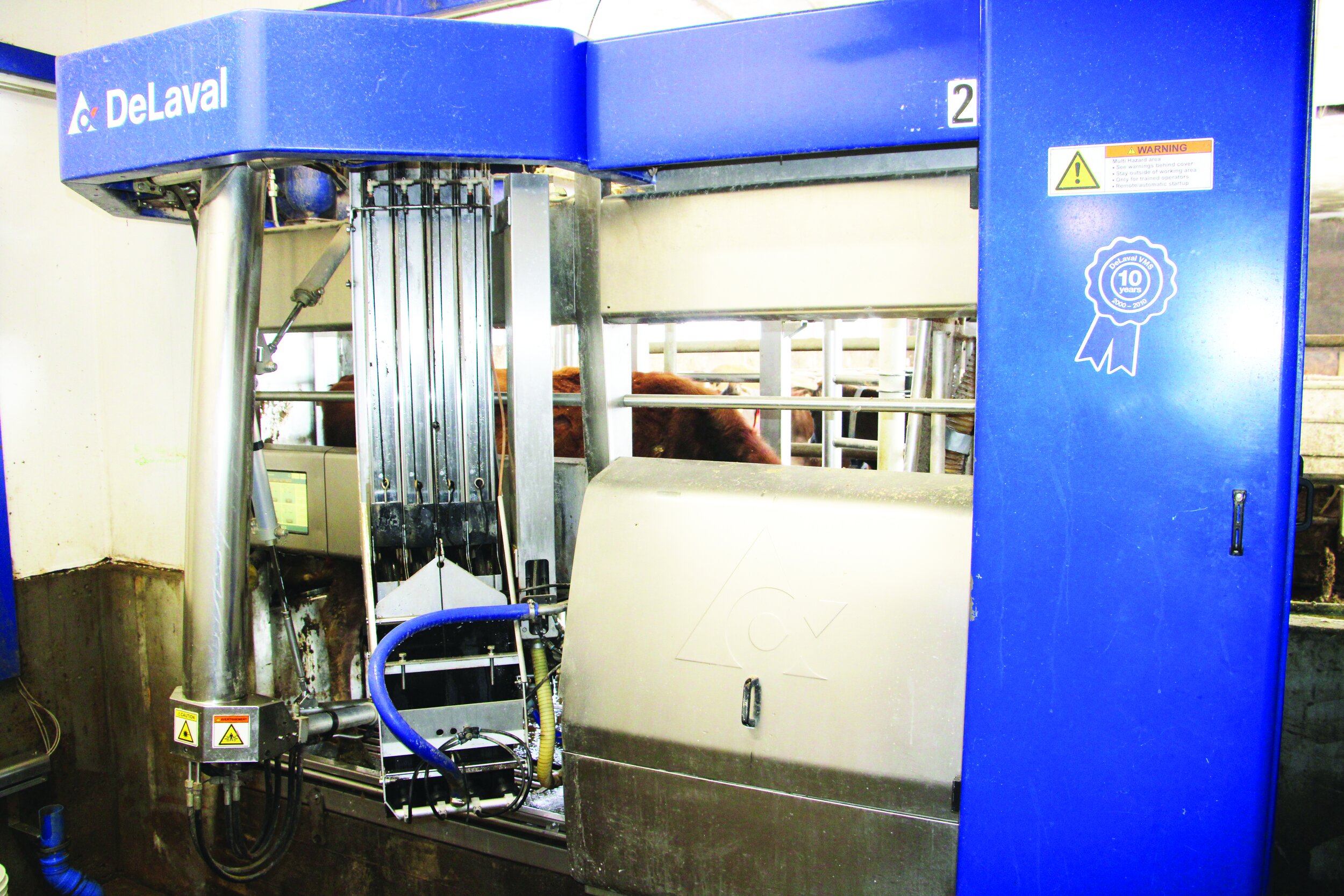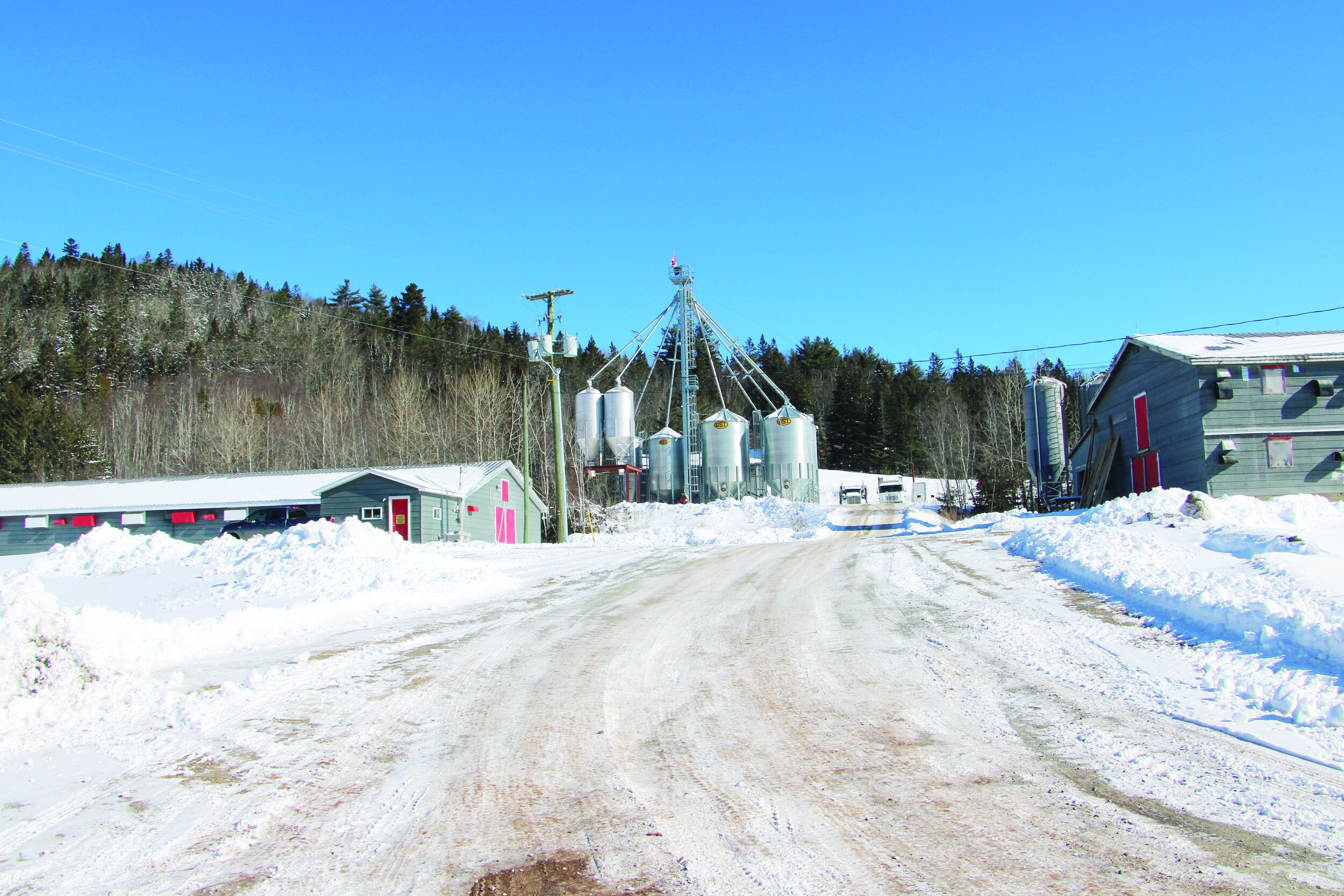Everything from day-old chicks to custom forage harvesting
/by George Fullerton
Grant’s Breeder Farm in Kars, N.B., on the Belleisle Bay branch of the Saint John River, has grown from a traditional mixed farm in the 1950s to a sprawling operation today that includes a poultry breeder flock for day-old chick and pullet sales, egg production, a dairy herd, a feed mill, and soon a custom forage harvesting service.
Don and Colleen Grant bought the farm in 1957 and ran a mixed operation producing cream, beef, hogs, eggs, and vegetables. In 1980, they established a layer breeder barn and then added a grower barn in 1981. The breeder barn produced fertilized eggs which, in turn, were hatched to primarily supply commercial layer growers.
Colleen developed a day-old chick marketing business under the moniker Mrs. Feathers and would deliver chicks to customers, including farm stores, throughout the Maritime provinces.
In 2004, Colleen and Don’s grandson Gilbert Matheson and his wife Stacy began taking over management of the farm.
“I spent a good deal of my young years being babysat in a car seat on my grandfather’s tractor. That is probably why I want to fall asleep when I drive a tractor now,” teased Gilbert. “I got serious working on the farm in my early teens and went to work full time when I finished high school.”
When the Mathesons stepped into the management role, the farm consisted of a breeder barn with 3,500 birds, a grower barn, and 30 beef cows. The Mathesons saw the pullet market grow and bought two poultry barns in Hatfield Point in 2007 to handle their growing flock.
Ready-to-lay pullets ship to customers at around 18 weeks of age. They sell to small backyard operations looking for a dozen birds right up to commercial quota operations. Deliveries of day-old chicks and pullets occur about two times per month. The day-old meat bird chick business picks up in the warm months when pastured bird raising gets underway.
“We have a philosophy that no customer is too small,” said Gilbert. “A lot of the time, those small customers grow into bigger customers. We serve them all.”
Grant’s Breeder Farm produces some 200,000 pullets and 250,000 day-old chicks annually.
MILK AND EGGS
The Mathesons eventually decided to get out of beef production. “In agriculture, we sometimes end up working for very little return on some aspects of our farming operation, but with beef it seemed that we were paying just to work,” explained Gilbert.
In 2008, they were accepted into the Dairy Farmers of New Brunswick’s new entrant program and built a new free-stall dairy barn.
“It had a double-four herringbone parlour,” said Gilbert of the barn. “We have continued to buy quota and built our Jersey herd up to 50 milking. In 2018, we installed a robot (milker). The forage was basically grass, but for the past two years we have made corn silage.”
Gilbert serves on the Dairy Farmers of New Brunswick board of directors.
“In 2020, we harvested 50 acres of corn and we plan to harvest 100 acres in 2021,” said Gilbert. “We had a great corn crop, which helped a lot since drought had cut our grass production.”
In 2009, Grant’s Breeder Farm was also a successful applicant to the Egg Farmers of New Brunswick’s new entrant program, starting out with 1,000 hens. As the new entrant program evolved, the lay flock number jumped to 5,300 and again to 6,000, which they’re at today. They expect to grow to 6,600 at end of the program.
Initially, eggs were graded on the farm and distributed to stores throughout south-central New Brunswick. In time, the grading and distribution was contracted to Maritime Pride Eggs in Amherst, N.S., and the eggs marketed through the Grant’s Breeder Farm’s Free Run brand.
In 2016, Colleen was looking to slow down her day-old chick business, and Stacy and Gilbert assumed that enterprise. In 2017, with their pullet business expanding, another set of poultry barns in Midland was acquired.
NEW FEED MILL
“We are continually analyzing our operations, looking for opportunities to cut costs,” said Gilbert. “We have always realized our highest operating cost has been feed purchases. We have for a long time toyed with the idea of building a feed mill on our farm.”
In 2019, the Mathesons built their feed mill adjacent to their Hatfield Point barns.
“We started out milling feed for our own operation,” said Gilbert. “We buy in grains, soy, and other components. We have seen significant savings through making our own feed. We have been approached by other farmers asking if we would mill their feed and we serve a growing number of farmers in a 50-kilometre distance. We operate two feed trucks and they are quite busy. The feed mill is the best farming investment we have made. Currently, the feed mill production is 30 percent for Grant’s barns and 70 percent for outside customers.”
In 2019, the farm business acquired 365 acres of land which will allow for the expansion of forage production.
This year, the Mathesons plan to begin offering custom forage harvesting. A self-propelled forage harvester will handle grasses and corn, and two high-capacity dump carts will transport the forage from the fields to the silos. They also plan to offer raking services.
“We continually look for opportunities to expand our operations,” said Gilbert. “Staying with the status quo is only a recipe for failure in the long run. We have to find opportunities to cut expenses and make more income in order to succeed.”
DEDICATED CREW
Gilbert said that the success of their operation is due in large part to Stacy’s attention to the farm’s business administration.
“I come up with the ideas for business expansion and develop a business plan,” said Gilbert. “And then Stacy makes the plan happen. We also have a person who handles a lot of the day-to-day office work. We have also hired another person to handle feed sales since it has grown quite large. We also rely on our accountant a lot as our operation grows and increases in complexity.”
A good crew of reliable and competent workers is the key to their success.
“We could not have made the expansions we have without our dedicated employees,” said Gilbert. “We have four to five people working full time and seven to eight part-time and seasonal workers.”
“We are indeed very fortunate to have a great team of workers,” underlined Stacey. “As our operation grows, we look for additional talent.”
The seven Matheson children – Kara, Bradford, Cecily, Silas, Solomon, Nadia, and Laughlin – all get involved in farm chores to varying degrees. Their ages range from 14-year-old Kara to three-year-old Laughlin.
In addition to farm chores, supervision, and management, Stacy finds time for household work and home schooling the children. In her spare time, she is a leader with the Sussex Holstein Calf 4-H Club (which also invites other dairy breeds and offers a variety of projects). Stacy is also a leader with the local home-schooling organization.
